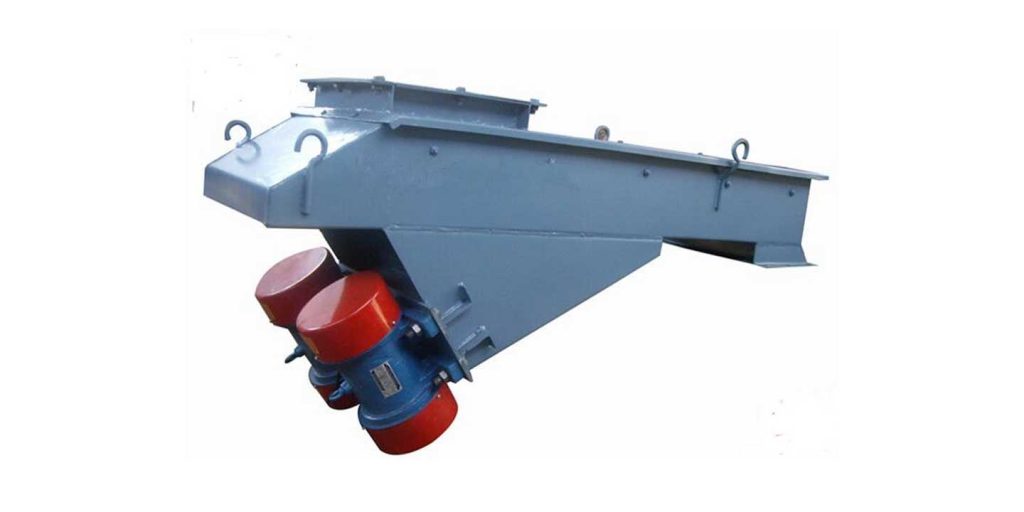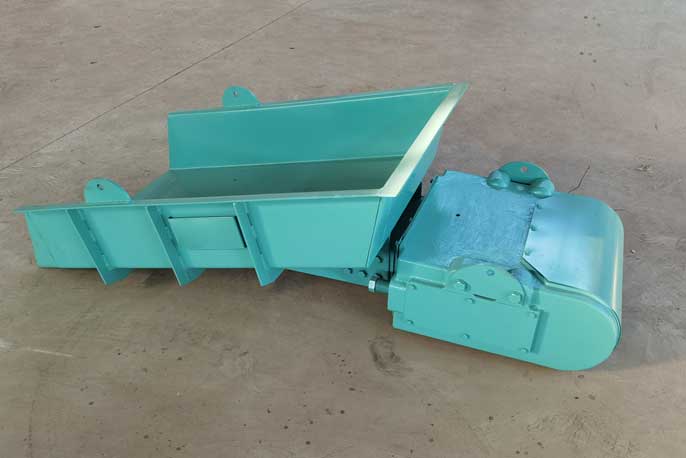The vibratory feeder is a material handling equipment that utilizes the principle of vibration to convey materials. Compared to traditional feeding devices such as disk feeders, pendulum feeders, and plate feeders, it boasts several advantages, including high throughput, low energy consumption, compact size, simple structure, and reliable operation.
It also offers ease of maintenance, easy implementation of automated control, and has found extensive applications in various sectors, including mining, metallurgy, machinery manufacturing, coal, chemical, building materials, as well as in grain and light industries.
It is widely used for discharging materials from hoppers, feeding belt conveyors and bucket elevators, supplying materials to crushers and ball mills, performing quantitative feeding in packaging systems, and ensuring uniform and continuous feeding in batching systems, among others.
Top 2 Advantages of Vibratory Feeders
- Wide Range of Material Adaptability: Vibratory feeders can handle a wide range of materials, including granular materials with a particle size above 0.1 millimeters, general bulk materials, and even large-sized materials with block sizes ranging from 400 to 500 millimeters, and exceptionally large blocks measuring over 1 meter. It effectively conveys materials of varying sizes and sha pes with outstanding efficiency.
- Versatility in Material Types: Apart from handling solid materials, vibratory feeders are also capable of conveying powdery materials. For materials that tend to disperse easily, it is essential to ensure that the supporting structure is designed in a sealed manner. Moreover, with appropriate measures, they can effectively transport high-temperature materials and highly corrosive substances.
Top 5 Applications of Vibratory Feeders
The versatility of vibratory feeders enables their deployment in diverse industrial applications:
- Mining and Metallurgy: In the mining and metallurgical industries, vibratory feeders play a crucial role in the efficient transportation of ore, minerals, and other raw materials to various processing stages. Their reliable and consistent performance helps streamline production processes.
- Machinery Manufacturing: Vibratory feeders are employed in machinery manufacturing to convey components and parts through different stages of the assembly process. Their precise and automated feeding ensures smooth operations and increased productivity.
- Coal Industry: In the coal industry, vibratory feeders are utilized for controlled and uniform discharge of coal from storage silos and bunkers. This ensures a consistent supply of coal to downstream processes, enhancing overall efficiency.
- Chemical and Building Materials: Vibratory feeders play a pivotal role in the chemical and building materials sectors by conveying various raw materials, additives, and ingredients to mixing and processing units. Their ability to handle different material types makes them indispensable in these industries.
- Grain and Light Industries: For grain and light industries, vibratory feeders facilitate the transportation of grains, seeds, and other small-sized materials, improving overall handling efficiency and reducing wastage.

Material Handling Capability of Vibratory Feeders
| Material Type | Particle Size Range | Special Considerations |
|---|---|---|
| Granular Materials | > 0.1 millimeters | Efficiently conveys various particle sizes and shapes |
| Bulk Materials | General block size | Effective for transporting bulk materials |
| Large-sized Materials | 400~500 millimeters | Suitable for conveying large-sized materials |
| Exceptionally Large Blocks | > 1 meter | Capable of handling exceptionally large blocks |
| Powdery Materials | – | Requires a sealed supporting structure for easily dispersible powders |
| High-Temperature Materials | – | Can transport materials at elevated temperatures |
| Highly Corrosive Substances | – | Suitable for conveying corrosive materials with appropriate measures |
Conclusion
The vibratory feeder, leveraging the power of vibration, stands as a versatile and efficient material handling equipment. With its ability to handle a wide range of materials and the capability to convey both solid and powdery substances, it has become an indispensable tool in numerous industries.
From mining to machinery manufacturing, from coal to chemical, and from building materials to grain sectors, vibratory feeders have revolutionized material handling, contributing to enhanced productivity and streamlined processes across various industrial domains. Their reliable performance, low energy consumption, and adaptability to diverse materials make them an invaluable asset for modern material handling operations.
